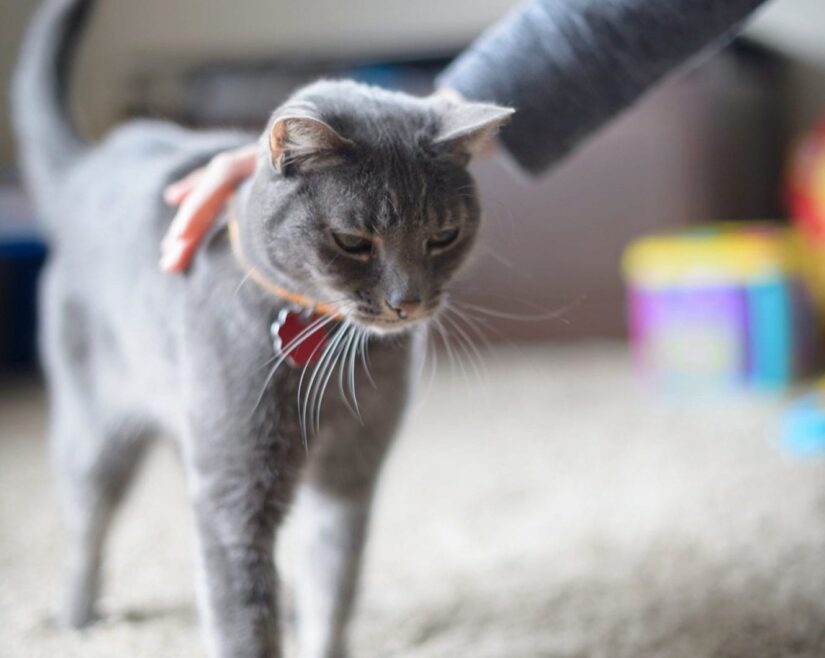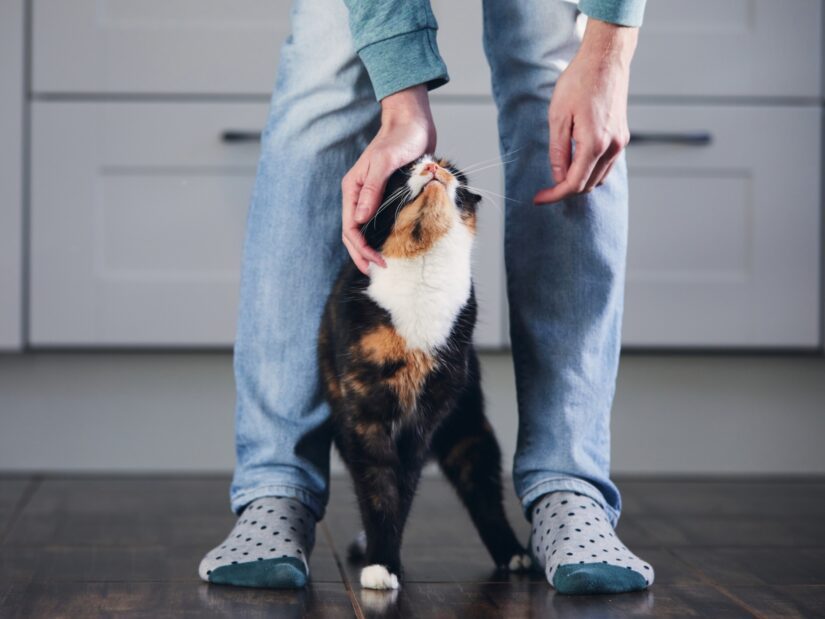“Can I pet your dog?”
It’s a question that dog guardians often get from friends or when out walking with their pet. But not all dogs are comfortable being touched, especially by strangers. Here are some tips you can share with others to make these interactions safer and happier for your pet.

How to pet a dog
1. Always ask permission before petting. Guardians will tell you whether or not their dog is comfortable being touched. If the guardian says no, please respect that.
2. Don’t stare. While eye contact is usually considered friendly for humans, it can be seen as threatening or aggressive by dogs. Never stare directly at or hold the gaze of the dog you’re approaching.
3. Move slowly and let the dog come to you. Sudden movements can startle a dog, who may react by barking or growling. Hold out the back of your closed hand for the dog and talk softly in an upbeat voice to them. If they approach, sniff and then stay, it’s a yes for the pet. If they sniff and walk away or don’t approach, it’s a no. Never force the interaction.
4. Never lean over a dog or put your face next to theirs. Some dogs become very nervous when a human leans over or crowds them. Turn your body slightly away from the dog as you pet them. Avoid petting a strange dog directly on the head.
5. Sweeten the deal. After getting the guardian’s permission, offer a dog treat as part of your “meet and greet” to make the experience even more positive.
6. Observe the signals. After a few strokes, check the dog’s body language. Are they trying to pull away or moving closer? Are they tensing up or relaxed and leaning into you? Take your signals from the dog. If they’re not happy, stop what you’re doing.
7. No hugs please! While most humans love hugs, it’s not a natural behaviour amongst canines. Many dogs experience high levels of stress when embraced or kissed because they feel trapped and unable to escape.

How to pet a cat
Like their canine counterparts, most cats enjoy interactions with humans — as long as we respect their boundaries.

1. Let the cat come to you. Don’t pick up or force an interaction with a strange cat. Let them make the first move. Cats often greet each other nose to nose. You can simulate this by offering an extended finger at nose level a few feet away from them. Let the cat decide if they want to come closer. If they approach and sniff or rub up against your hand, gently begin stroking them.
2. No belly rubs, please. Most cats prefer to be softly stroked (not patted!) on their foreheads, cheeks, behind their ears or under their chin. Use the pads of your fingers rather than your nails. A gentle long stroke from the forehead to the base of the tail can also be enjoyable (never from the tail upwards), but most cats don’t like you scratching their belly or playing with their feet or tails.
3. Watch for signals. If a cat jumps on your lap, pet them once or twice and wait to see their reaction. Sometimes cats just want the warmth of a lap, but if they lean into you or give you a head bump, you can offer more light strokes.
4. Purr of approval. While we tend to think that purring is a cat’s way of expressing happiness, it’s a bit more complicated than that. Cats purr as a greeting and as a care-soliticing call. They’ll also purr when they’re sick or injured, possibly to self-soothe, so it’s important to pay attention to context.
5. Know when to quit. A cat will let you know when they’ve had enough. Even if they’ve enjoyed the petting, it can become overstimulating and uncomfortable for them. They may give you a scratch or a bite to signal the end of your petting time, but it’s best to stop before then. Often, they’ll give you more subtle signs first. Watch for tensing up, flattening ears, a twitching tail and rippling skin along their back.

Remember to rule out medical issues
If your dog is normally friendly but suddenly begins growling or snapping when being petted, or your cat suddenly begins to swat or growl when touched, check with your veterinarian to make sure your pet isn’t sick or experiencing pain.
Related articles
Why doesn’t my dog like people petting him?
How to pet a cat (PDF)
Dealing with petting aggression in cats
Find a reliable trainer
If you need help teaching your puppy or kitten to be okay with receiving pets, reach out to a BC SPCA-accredited AnimalKind trainer today.
What about petting etiquette for small animals?
Being prey species, small animals like rabbits, guinea pigs and hamsters are easily frightened. They need to be approached slowly to help build their trust first. Read our small animal handling tips to find out the best way of doing this.
